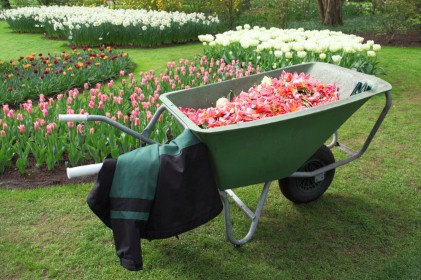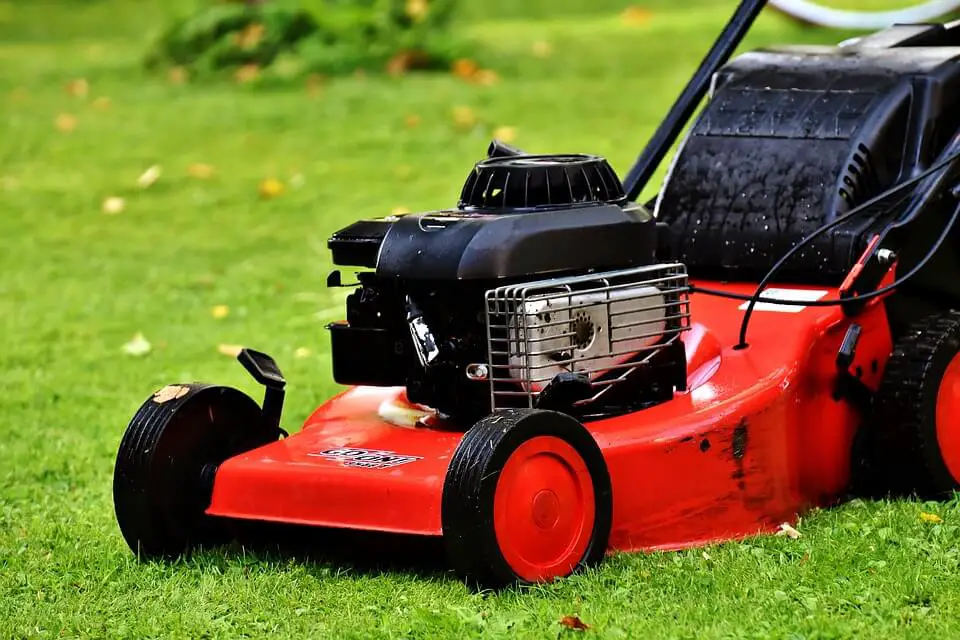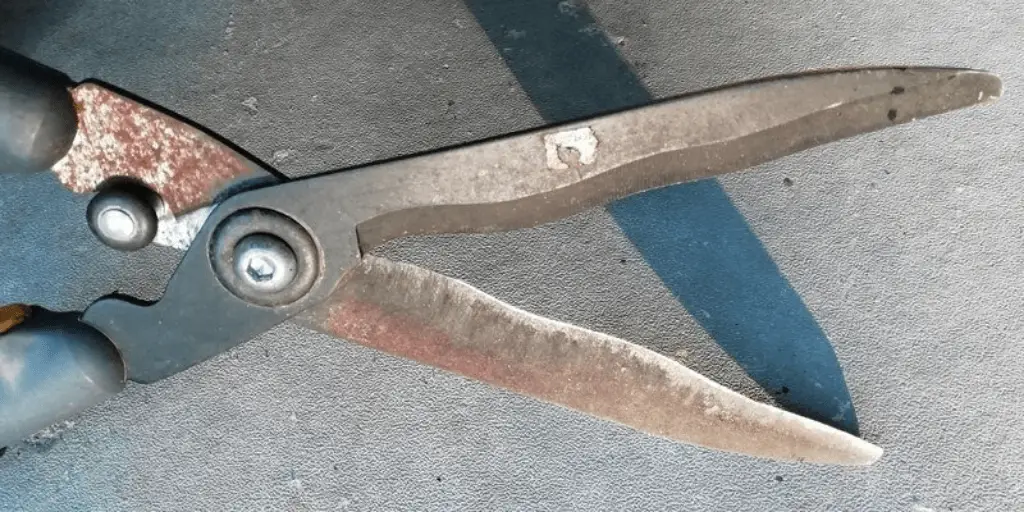9 Tools Used for Gardening Every Garden Owner Should Have
Last Updated on August 27, 2021 by Duncan
Step into any gardening store, and you will find hundreds, if not thousands, of gardening tools. But do you need all these? Absolutely not! You need just a few of the essential ones.
Do you know an exciting thing? Most of the essential tools have been around for a long time.
So, are you ready to embark on your gardening journey? Here are nine tools used for gardening that every garden owner should have. You will also learn the best ones in the market and where to buy:
#1: Spade
Featuring a flat, rectangular blade, the spade is one of the essential gardening tools you can’t do without. You use the spade to make holes for shrubs, planting trees, and edging along the garden bed.
It’s also perfect for digging up plants such as kales during transplantation. Due to its pointed blade, the spade makes an excellent tool for breaking up sod, roots, and weeds.
When buying it, go for one with a slick metal surface that makes it easy for soil and other materials to slide off easily.
Many gardeners use the terms spade and shovel interchangeably, but the two tools are quite different.
While the spade has a rectangular blade, the shovel has a curved blade best suited for scooping soil. If you want to know more about shovel vs. spade, read this article we recently put together.
Confused about whether to get a spade or shovel? Why not go for a shovel/blade hybrid? This highly rated Spearhead spade is a perfect choice for not only scooping the soil, but also separating perennials on your farm.
#2: Garden fork
Although, often overlooked, the garden fork is a vital gardening tool. It comes in handy when looking to break up firmly packed soil that the spade won’t get through. Since it doesn’t bring up weed seeds, it works excellently in existing beds.
You can also use it to mix in soil amendments or remove plant clumps without bringing too much soil out with them.
When purchasing, go for a fork with heavy-duty tines that won’t bend when working in rocky areas.
#3: Hand rake
You probably have the traditional lawn or acorn rake that you use to remove acorns, leaves, and other debris. This rake is impractical to use in the garden as you can easily damage or uproot plants.
You need a hand rake to smoothen the soil and remove any clumps from the garden. There are all types and sizes of hand rakes.
For you to get the most from it, go for one made from metal as it’s more effective at breaking up the soil and smoothing the garden. It also tends to last longer.
#4: Wheelbarrow

The wheelbarrow is the garden donkey. You use it to move dirt, tools, plants, piles of leaves, and even mixing concrete. If looking to use the wheelbarrow to move soil or compost, go for a traditional wheelbarrow design as it makes it easy to dump the load once you get to your destination.
Are you going to be using the wheelbarrow to move plants or tools? Opt for the cart design.
Confused about where to start? Read this detailed wheelbarrow buying guide.
When making the purchase, remember that steel tray wheelbarrows are great as they last for long. Unfortunately, they are heavy. If looking for a lighter-weight tool that you can easily haul around, go for a plastic tray wheelbarrow.
A good quality wheelbarrow doesn’t come cheap, so you should take good care of yours. When you aren’t using it, store it clean and dry to protect it from rust. If it has inflatable tires, keep the tires properly inflated for more comfortable wheeling.
#5: Garden hoe
Discovered in medieval Europe, the garden hoe is a must-have tool for any serious gardener. The tool makes it easy to cultivate the soil, edge a lawn, control weeds, harvest root crops, and do many other gardening tasks.
There are all types of garden hoes. Some can perform multiple tasks, while others are designed for only one specific use. Some have flat blades, while others feature a pointed blade.
The hoe that you go for depends on the task you want to perform in your garden. If looking to dig holes or cut through weeds, go for a broad hoe with a larger blade. Want to cut out weeds? A shuffle hoe makes an ideal choice.
If working in a small area, choose a warren hoe that has a shorter, triangular blade for precise work.
If performing a wide variety of tasks, you may need to buy several hoes for different tasks. If you don’t have the budget for it, go for a Dutch or draw hoe that you can use for various tasks.
#6: Soil knife

This is a must-have for any gardener. A soil knife is not only easy to carry, but also highly versatile. You can use it as a twine cutter, weeder, measuring device, and trimmer. Some gardeners even use it as an alternative for the hand trowel.
One of the best gardener knives we have come across is the Nisaku NJP650 Hori Hori knife. The knife is made from high-quality stainless steel, the knife has a beveled, sharp edge for slicing, a serrated opposite edge for cutting, and inch markers to ensure you plant at the correct depth.
Watch the video below to see the Hori Hori knife in action.
#7: Hand trowel
The hand trowel is designed to move soil, digging small holes for annuals, vegetables, perennials, and other small plants. The scooped blade makes it easy to lift the plant from the soil for transplanting.
You can also use the hand trowel for mixing soil, weeding, and cultivating.
When buying the tool, opt for one with a broad blade so that you can move more soil. If you will be spending most of your time digging up weeds, go for a trowel with a long, narrow blade.
Trowels with a stainless steel head or forged from stainless steel often do a better job. They also last for a long time.
#8: Garden hose
Water is life, and your garden can’t do without it. Garden hoses come in three main hose diameters: ½ inch (produces an average of 9 gallons per minute), 5/8 inch (avg 15 gal per minute), and ¾ inch (generates up to 25 gal per minute). And range in length from 10 to 100 feet.
To better control the water pressure and spray radius, buy a garden hose with an adjustable nozzle.
When making the purchase, we recommend you go for a heavy-duty commercial hose.
While it will be expensive to buy, it will last for a long time so you won’t have to keep on replacing it. One of the best ones we have used for years is the Teknor Apex Neverkink, 8844-100, PRO Water Hose.
#9: Garden gloves

To keep your hands clean, prevent bruises and other forms of injury, it’s wise you invest in garden gloves.
Good quality garden gloves are those made from durable but not too bulky materials. The fabric should be water-resistant and, at the same time, breathable.
This is to ensure you are protected from water and, at the same time, comfortable when working.
How do the gloves fit? This is vital as poorly fitting gloves result in blisters and result in accidents once they slip off.
To protect your wrists and forearms, it’s wise you go for gloves with longer cuffs. These will protect you from scratches and, at the same time, keep the soil from getting in.
We recommend the Magid thorn-resistant gardening gloves. Besides being puncture-resistant, they also provide ample protection to the forearms, so you work without worrying about injuries.
Valuable tooltips
You should be cautious when buying the garden tools as you don’t want to buy the wrong ones only to get home and realize they can’t perform the tasks you wanted them to perform.
At your local store, spend time handling the tools and mimic the actions you will be performing in the garden. If the tool feels heavy, the chances are that you are going to hurt yourself when working.
On the other hand, if the handle is too big or too long, you won’t be comfortable using it.
When buying shovels and digging forks, go for those with D-shaped handles. This is because the handles are easier on the wrists.
Tools with wood or coated metal handles are often the best. They are strong and usually not too heavy. Two of the best and durable woods you should look out for are ash and hickory.
Avoid Douglas fir wood as it’s often used in tools of lesser quality. You also should avoid painted handles as they are often painted to disguise the inferior wood underneath.
Fiber-glass and tubular steel handles are used on professional tools. They are usually heavy and durable. Unfortunately, they are expensive for most everyday gardeners. If you can afford them, these are often the best.
The durability of the garden tools depends not only on their quality but also on their storage. For the tools to last for long, hang the long-handled ones neatly on a peg rack to protect the edges from dulling.
For the short-handled tools, store them in a garden bag that you can even carry as you work.


